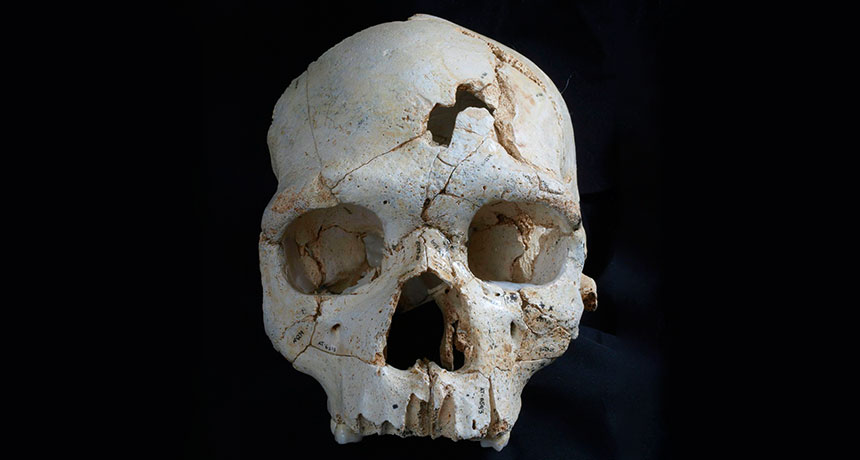Double blow to skull is earliest evidence of murder, a 430,000-year-old whodunit
Fossil reconstruction gives hints on how to get away with homicide, Pleistocene-style

FOUL PLAY Cranium 17 was pieced together from 52 bone fragments fished from Spain’s Sima de los Huesos cave. Dating back 430,000 years, the skull exhibits signs of two traumatic injuries above the left eye, at least one of which proved fatal.
Javier Trueba/Madrid Scientific Films







